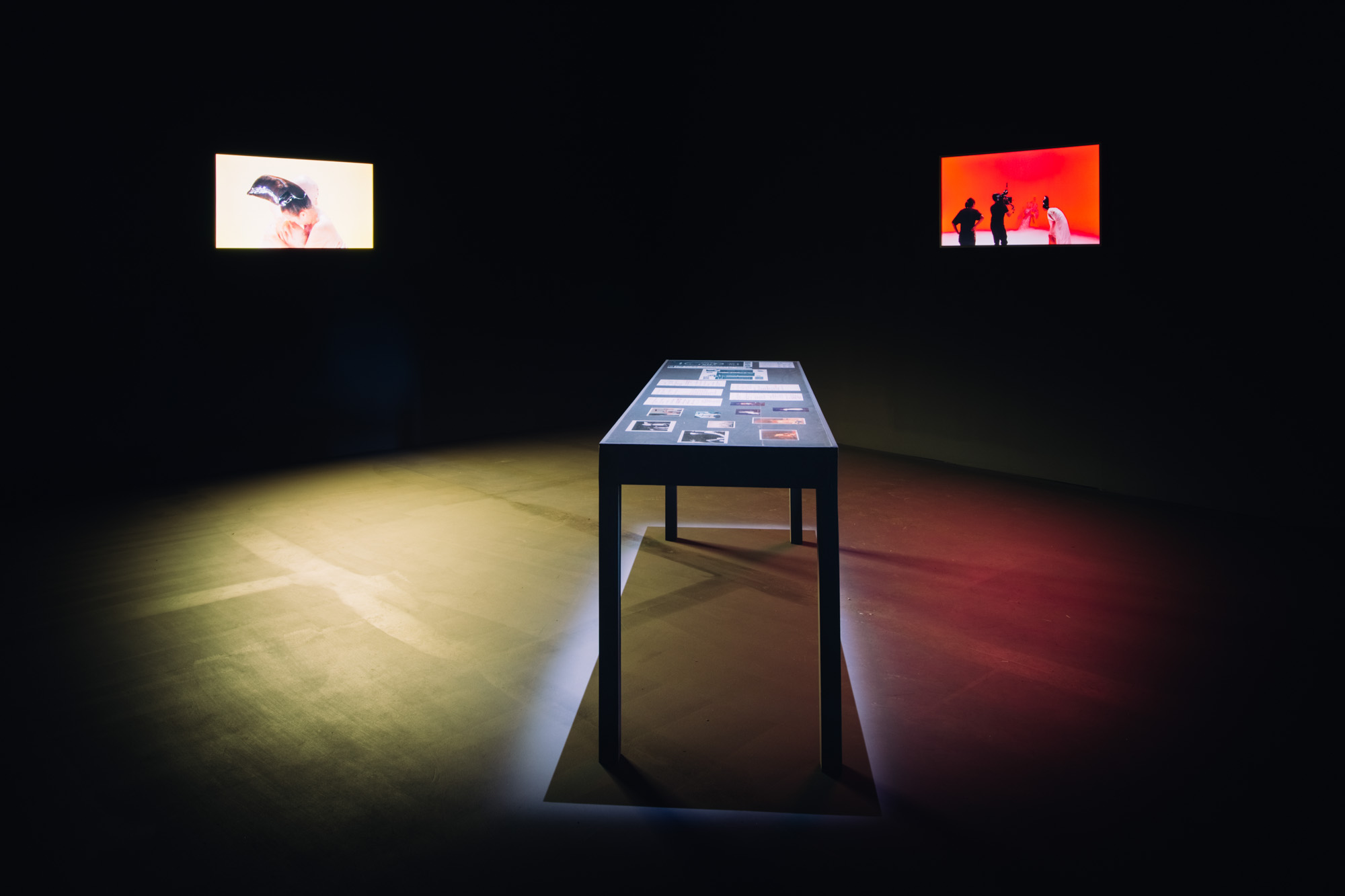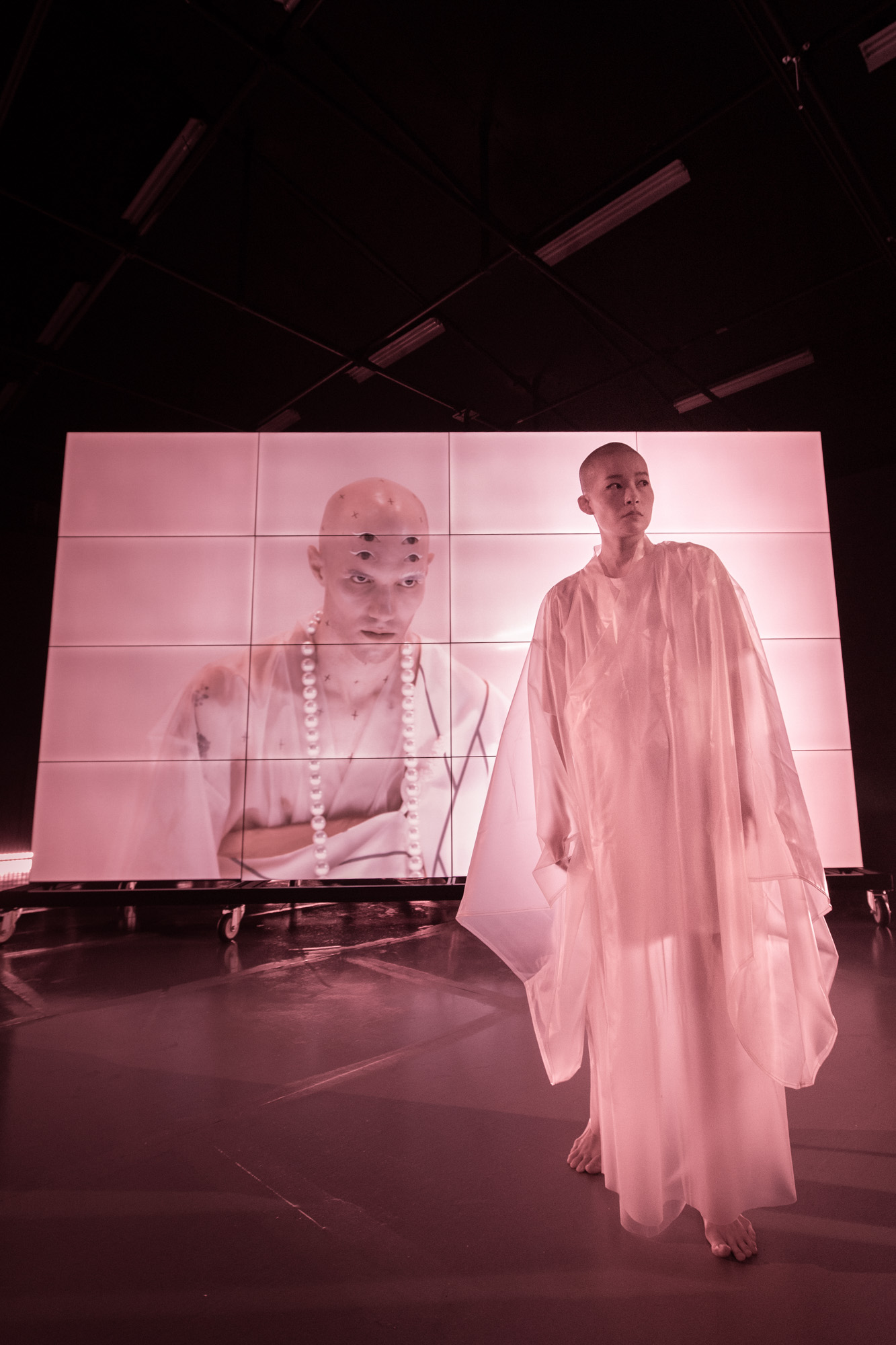Shows
Futures Retold: Su Hui-Yu’s “The White Waters”




Su Hui-Yu’s The White Waters (2019) came with a flood warning. Alerted to the tides of fog that hissed periodically from the corners of the exhibition space, slicking the floor of the dark room, viewers of the large-scale filmic installation planted their feet carefully. The Taiwanese artist’s work is a retelling of the Flooding of Jinshan Temple, an act in The Legend of the White Snake. As the original Chinese legend goes, when the monk Fahai and the White Snake spirit met, the temple was flooded and countless bystanders drowned. However, Su’s conceptual framework of “reshooting” opens up a possibility for multiplicity that in his version rescues subject, viewer, and bystander alike from being obliterated by the deluge.

Presented in Taipei for the first time since it was commissioned for Performa 19, the showing of The White Waters at the Taiwan Contemporary Culture Lab’s annual exhibition “Re:Play” was prefaced by archival materials that document the Critical Point Theatre Phenomenon’s 1993 production White Water. Directed by pioneer of experimental Taiwanese theater Tian Chi-Yuan, this all-male adaptation of the Chinese classic serves as both a spiritual predecessor and a queer point-of-departure for Su’s contemporary work. In the collected images, Tian’s actors, semi-nude and in stark make-up, appear dancer-like as they inhabit and subvert the legend. The photographs are displayed beside the script, scribbled by hand in blue, struck through and rehashed in red. Similarly, Tian’s original production reformulated the classic narrative to query identity and social issues in the style of Taiwan’s Little Theatre movement. Drawing from this legacy, Su’s film seeks to continue a reflection on these issues of body, intimacy, and social identity, and offer up further edits for a future that is perhaps queered by this endeavor.

The three domineering screens of Su’s installation start out white, their sudden illumination cutting through the blackness. In Su’s version of the legend, the roles of Fahai and the White Snake are respectively played by Popcorn—a New Zealand-born fixture of the Taipei drag scene—alongside prominent Taiwanese Instagrammer Jong Yi-Ling. The fact that these muses are embedded in the world of digital media, and have constructed and reconstructed themselves through the mercurial approach to identity that this affords is central to Su’s retelling. As they glide across the clean background and regard each other for the first time, it is just the initial take in a series of iterations that reimagine their legendary encounter. Su’s screens flit through a series of vibrant colors; each time the central figures are bathed in new light, their meeting takes on a new tone and their characters are reframed. As they shift from aggressive awareness (pink), to hysterical bestial glee (lilac), to the relief of intimacy (cherry red), it would be easy to interpret Su’s adaptation as a single thread that pursues a traditional narrative arc, one that cuts up through conflict and arrives at resolution. Yet, Su’s technique and framework of “reshooting” is fundamentally expansive, enabling one to emancipate each colorful retelling of the encounter. Each is a distinct interpretation of entanglement that gestures toward a plurality of possible outcomes.
The finale of the traditional Legend of the White Snake sees Fahai flee into the belly of a crab. Su’s film concludes with a similar image, but with both characters in a naked embrace, their conjoined bodies distorted into a crustacean-like form through the layering of footage. Throughout the film, similar acts of distortion complicate any singular reading of its central figures. Su’s aesthetics simultaneously allude to post-AIDS histories and posthuman futures. Awash in cool blue light, uncertain markings on the skin recall the historically heavy-handed cinematic representations of the afflictions of HIV/AIDS. In another scene, blemishes under lime-green lighting become metallic scales, teasing a transcendence of humanity that could come at any moment. The actors’ bodies, covered in pinpoints for CGI body-mapping, imply further abstractions of this story. Though Su’s final shots may appear to reconcile Fahai and the White Snake, in fact his “reshooting” resists the liberal trope of contending with the other by absorbing or assimilating it. Instead, he offers up a diverse plethora of entanglements, each borrowing from the legacy of past performances in order to signal the possibility of varied and multiple futures.
Su Hui-Yu’s The White Waters was performed at the Taiwan Contemporary Culture Lab (C-Lab), Taipei, on October 18, 2020. The video installation is on view at C-Lab until November 29, 2020.
To read more of ArtAsiaPacific’s articles, visit our Digital Library.








